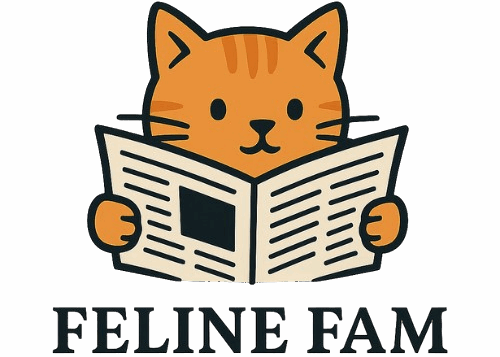When most people think about getting a cat, they assume litter training will be straightforward. After all, cats naturally want to bury their waste, right? Well, not exactly. While the vast majority of cats take to litter boxes like fish to water, some breeds present unique challenges that can leave even experienced cat owners scratching their heads in frustration.
Most cats require little training to use their litter box, because cats have a natual desire to dig and bury their waste. But once a cat has developed undesirable toilet habits the problem can be very difficult to resolve. The truth is, certain breeds come with their own set of quirks, sensitivities, and behavioral patterns that can make litter training feel like an uphill battle.
Whether it’s their wild ancestry, specific physical traits, or just plain stubbornness, these seven breeds will test your patience and creativity when it comes to bathroom etiquette. So let’s dive in and discover which feline friends might turn your home into an unexpected minefield.
Bengal Cats: The Wild Child That Refuses to Follow House Rules

Bengal cats are absolutely stunning with their leopard-like spots and athletic builds, but their wild heritage comes with a hefty price tag when it comes to litter training. Bengal cats typically reach sexual maturity at a similar age to other cat breeds. They are closer to their wild ancestors because of their hybrid status from the Asian Leopard Cat (ALC). As a result, the drive to mate and continue their species is strong. This leads to behaviors such as spraying if they are not neutered or spayed.
These cats have incredibly heightened senses and intelligence, which sounds great until you realize they’re analyzing every detail of their litter box setup. We know for a fact Bengal cats are intelligent, which increases their awareness and sensitivity. Bengal cats are high-energy; they must have those energy needs met. They might reject a litter box because they don’t like the texture, the location, or even because there’s too much ambient noise nearby.
What makes Bengals particularly challenging is their stress response. Stress and the “Bengal Brain” is a huge contributor to FLUTD. When they’re anxious or their energy needs aren’t met, they often express their displeasure by avoiding the litter box entirely. Litter box avoidance is one of the top reasons why Bengal cats (including all cats) are surrendered to shelters and rescues. In reality, it is usually improper litter box maintenance (on the part of the human) that creates litter box avoidance.
Siamese Cats: The Vocal Perfectionist With Specific Demands

Siamese cats are notorious for their strong opinions about everything, and their litter box is no exception. Siamese cats are renowned for their intelligence, affectionate nature, and, let’s be honest, a touch of arrogance. While their unique personalities make them irresistible companions, it also means that litter box training can sometimes be challenging. These cats will literally tell you exactly what they think about your litter box setup through their distinctive yowling.
Their perfectionist tendencies mean they’re extremely particular about cleanliness. Siamese cats are fastidious groomers and prefer a clean, well-maintained litter box. Scoop out clumps and waste at least once a day, and completely change the litter every week or two, depending on usage. A clean litter box not only prevents odors but also encourages your Siamese cat to use it consistently.
Siamese cats can be particular when it comes to their litter box preferences. Experiment with different litter types, textures, and scents to find the perfect match for your feline friend. Some Siamese cats prefer fine-grained, unscented litters, while others may enjoy the soft, cozy feel of clumping litters. The challenge is that once they decide they don’t like something, they’ll avoid it completely.
Siamese cats can be sensitive to changes in their environment, which can sometimes lead to litter box issues. If you’re moving to a new home, introducing a new litter type, or making any other significant changes, do so gradually to help your Siamese cat adapt. Even moving their litter box a few inches can cause a complete boycott.
Maine Coon Cats: The Gentle Giant With Size-Related Problems

Maine Coons are beloved for their gentle personalities, but their impressive size creates unique litter box challenges that many owners don’t anticipate. Maine Coons, even as kittens, are notably larger than average cats. Their size and specific preferences require careful consideration when setting up their litter box environment: Spacious Litter Box: Choose a litter box that’s generously sized to accommodate your Maine Coon kitten’s growing frame. Even as kittens, they need ample space to turn around and comfortably position themselves.
The biggest issue is finding a litter box that actually fits them properly. Standard litter boxes are simply too small for these magnificent cats, leading to accidents and avoidance. Unfortunately,some cats are like that be sure the box is 2x the size of the cat. Mine are from storage bins cut with a gadget frome home depo. And lots of litter, 3 inches, scoop every day. Many owners end up having to get creative with storage containers.
Another challenge is their long, fluffy coat which can easily pick up litter and waste. The only one I’m having trouble with is he WILL NOT cover his poop in the litter box. No scratching or digging and he gets it all over his long hair and tracks it into the house. This creates a messy situation that can discourage both cat and owner from maintaining good litter box habits.
Persian Cats: The High-Maintenance Beauty With Hygiene Issues

Persian cats are absolutely gorgeous with their luxurious coats and sweet expressions, but their physical characteristics make litter training a significant challenge. Their flat faces and breathing issues can make it difficult for them to comfortably use standard litter boxes, especially if there’s any dust from the litter.
The biggest problem with Persians is their incredibly long, fluffy coat that acts like a magnet for litter particles. Every trip to the litter box becomes a grooming nightmare as litter gets trapped in their fur and spreads throughout the house. This can create negative associations with the litter box itself.
Their dignified nature means they’re extremely sensitive to dirty litter boxes. If the box isn’t pristine, they’ll simply find somewhere else to go. Unfortunately, their coat also means they need help staying clean after using the litter box, which many cats find stressful and invasive.
Persian cats also tend to be less active than other breeds, which can lead to constipation and litter box avoidance when elimination becomes uncomfortable. Their laid-back personality might seem like an advantage, but it often means they won’t communicate their litter box problems until the situation has become serious.
Scottish Fold Cats: The Sweet-Faced Breed With Hidden Complications

Scottish Folds are absolutely adorable with their unique folded ears and round faces, but these very features can contribute to litter training difficulties. Since this mixed cat breed will likely inherit the folded ears from the Scottish fold, you will need to regularly clean their ears with a pet-safe wipe to get rid of any dirt trapped underneath. If you bathe your Scottish Fold and Maine Coon mix, then ensuring you dry any water that drips into their ear with a clean towel or cotton pad is important.
The folded ears that make them so distinctive can also trap moisture and odors, making them more sensitive to scented litters and strong smells in general. They often prefer unscented, low-dust litters but can be finicky about texture and depth.
Scottish Folds tend to be more sedentary than other breeds, which can lead to joint stiffness and discomfort when getting in and out of litter boxes. This is especially problematic as they age, leading to avoidance behaviors that can be difficult to reverse.
Their sweet, passive nature means they might not communicate litter box problems effectively. Instead of meowing or showing obvious signs of distress, they’ll simply start eliminating elsewhere, leaving owners puzzled about what went wrong.
Sphinx Cats: The Hairless Wonder With Temperature Sensitivity

Sphinx cats are unique in the feline world, and their lack of fur creates specific litter box challenges that many people don’t consider. These cats are extremely temperature-sensitive, and cold litter can be genuinely uncomfortable for their bare skin to touch.
Their hairless bodies mean they feel every texture more intensely than other cats. Rough or coarse litters can be uncomfortable or even painful against their sensitive skin. Many Sphinx owners find themselves going through multiple types of litter before finding one their cat will actually use.
Sphinx cats also tend to be very active and curious, which can lead to them tracking litter on their skin and then trying to wash it off. This creates negative associations with the litter box, especially if the litter sticks to their skin or gets between their toes.
Their lack of fur also means they don’t have the natural insulation that helps other cats regulate their body temperature, so they might avoid litter boxes in cold or drafty locations. Finding the perfect spot that’s warm enough but not too humid becomes a constant challenge.
Savannah Cats: The Exotic Hybrid That Plays by Different Rules

Savannah cats are stunning creatures that combine the wild beauty of servals with domestic cat traits, but this exotic heritage makes them one of the most challenging breeds to litter train. Their wild instincts are much stronger than typical house cats, leading to marking behaviors and territorial issues.
These cats have incredibly high energy levels and intelligence, similar to Bengals but often even more intense. They require mental stimulation and physical exercise that most owners underestimate. When these needs aren’t met, litter box problems are almost inevitable as the cats express their frustration.
Savannah cats often prefer to eliminate in different locations for urine and feces, a behavior inherited from their wild ancestors. This means providing multiple litter boxes in different areas, and even then, they might reject the boxes entirely in favor of plants, sinks, or other locations that seem more natural to them.
Their size and athleticism also create practical problems. Standard litter boxes are too small, and their powerful digging can scatter litter everywhere. They also tend to be very particular about litter texture, often preferring sand-like substrates over traditional clay litters.
Conclusion: Understanding the Challenge

Living with any of these seven breeds doesn’t mean you’re doomed to a house full of accidents, but it does mean you need to be prepared for extra patience, creativity, and dedication. But once a cat has developed undesirable toilet habits the problem can be very difficult to resolve. The key is understanding that these cats aren’t being difficult on purpose – they’re responding to their genetics, instincts, and physical characteristics.
Success often comes down to providing multiple large litter boxes, experimenting with different litters, maintaining impeccable cleanliness, and addressing any underlying health or stress issues. Remember that what works for one cat might not work for another, even within the same breed.
These breeds can make absolutely wonderful companions when their needs are properly understood and met. The extra effort required for litter training is often just the beginning of learning to work with their unique personalities and requirements.
What do you think about these challenging breeds? Have you experienced litter training difficulties with any of them? Tell us about your experiences in the comments below!





